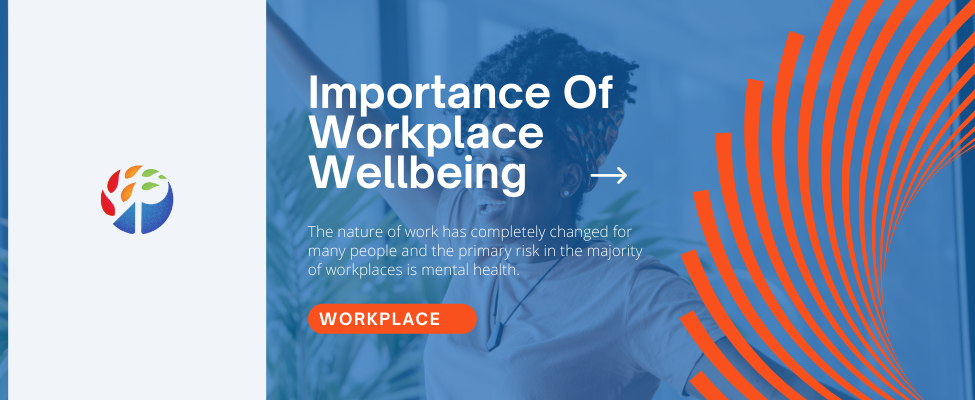Importance Of Workplace Wellbeing
The nature of work has completely changed for many people and the primary risk in the majority of workplaces is mental health. One in four people experience mental health issues in any given year and stress is the number one cause of long-term workplace sickness absence. In fact, it’s been found that 300,000 people with long-term mental health problems lose their jobs each year!
A little pressure can increase motivation and productivity at work, it helps us avoid boredom and enables us to reach our peak performance. But, there is a fine line between ‘healthy pressure’ and stress – where we feel overloaded and overwhelmed. If allowed to escalate, stress can lead to people feeling exhausted, burnt out and cause mental and physical health problems.
In addition to increased burnout, there is still a stigma around mental health. A report of over 1,500 employees and SME business leaders, highlighted that unexplained sick days are costing the UK economy £1.4bn annually. Stating employees are still uncomfortable disclosing mental health issues or burnout, as nearly a quarter admit they would rather take an unexplained sick day than discuss their issues with their employers.
The Health and Safety Executive (HSE) and mental health charity, Mind, has recently identified key triggers for stress as well as a helpful checklist for companies to understand how their employees are feeling and how they are responding to pressure.
These include;
- Busy workloads, difficult work patterns and environment.
- How much say the person has in the way they work.
- What help, encouragement, and resources, both internally and externally, are available.
- Promoting positive working to avoid conflict.
- Whether people understand their role, purpose and value within the organisation.
- Job insecurity and how change is managed and communicated in the organisation.
Besides recognising workplace triggers, creating an effective strategy for mental health that’s embedded into the culture can also be a great way to ensure positive employee wellbeing. A holistic framework that looks at the whole organisation whilst also including the core and enhanced standards is recommended for a thriving work environment.
This framework could include;
- Ensuring the business is aware of the roles and responsibilities of all staff and support available as outlined in a mental health policy
- A passionate steering group consisting of a mix of employees dedicated to improving culture around wellbeing and driving any actions through to completion
- Training line managers to proactively spot the signs of mental ill-health and stress, knowing how to have open conversations, manage disclosure and sickness absence.
- Promoting wellbeing and ensuring wellbeing check-ins are on every relevant agenda including one-to-ones and appraisals
- A regular quarterly staff survey
- Providing staff with a voice to raise ideas
- Promoting peer-to-peer support and work-life balance
Free resources are another great method, Mind’s Wellness Action Plans (WAPs) are an easy, practical way for employers to encourage people to manage their own mental health at work, and for managers to support the mental health of their teams. The WAPs are personalised, practical tools that everyone can use – whether they have a mental health problem or not. They help people identify what keeps them well at work, what causes them to become unwell, and how to address a mental health problem at work should they be experiencing one.
On top of that, staff satisfaction and culture can similarly have an impact on employee wellbeing. So ensuring there are regular staff surveys and forums, where employees can address concerns, is one way that management can understand some of the issues their workforce faces.
Along with staff surveys listen and learn lunches are great ways for an employer to better support mental wellbeing. Hosting such events can break down barriers and stigmas around mental health and demonstrate that mental wellbeing is important to the business. Try encouraging everyone to be mindful and conscious of mental health issues so they notice if their colleagues may not be feeling great and they can signpost them to available support.
Ultimately, you don’t need a large budget to create an effective mental health strategy. Make the most of free resources out there to support employees, ensure policies are reviewed consistently, toolkits are being used to train relevant members of staff and advice/guidance takes place where needed.
Share this post and follow us on social media!
Like our blogs? Sign up for our newsletter




Comments are closed